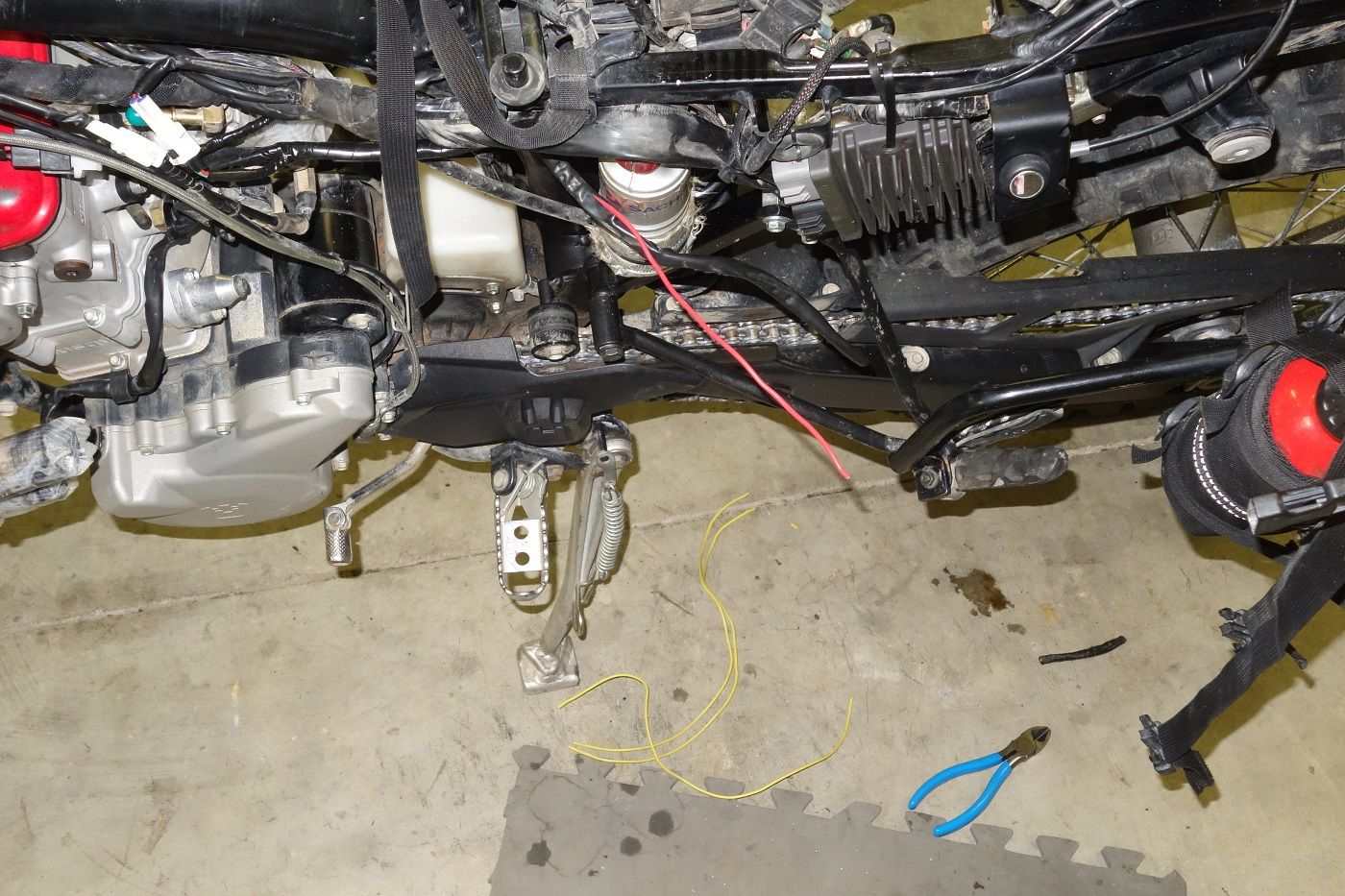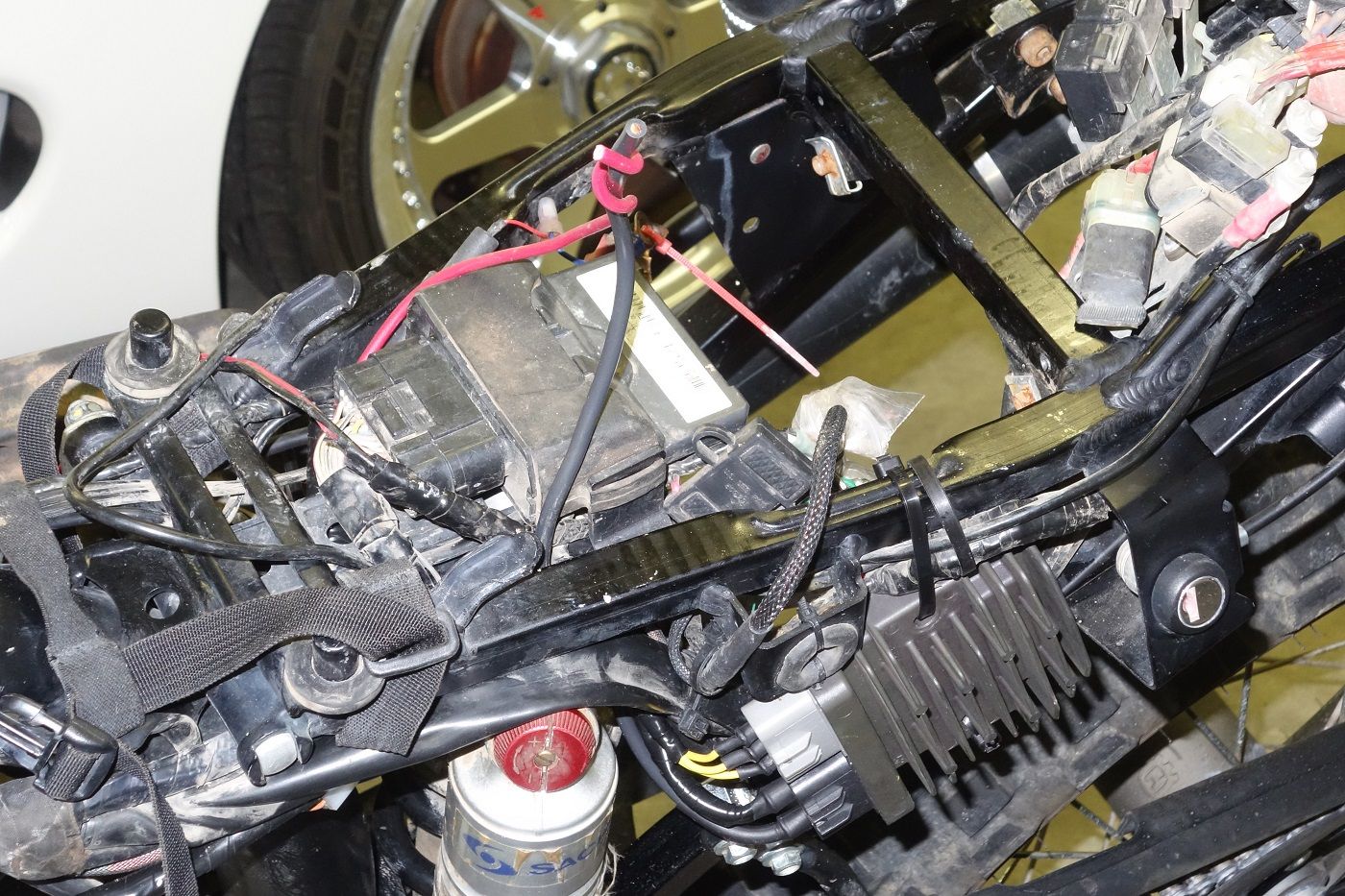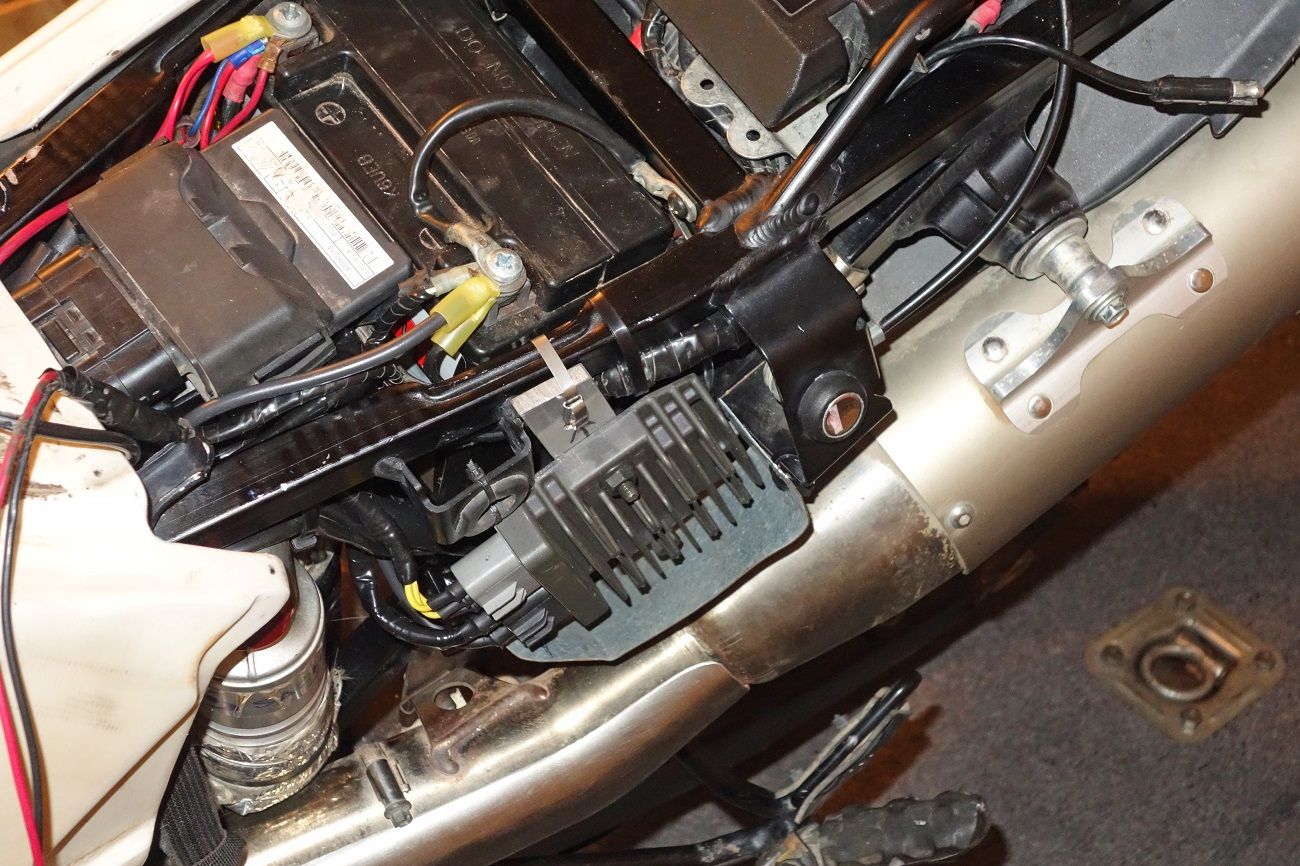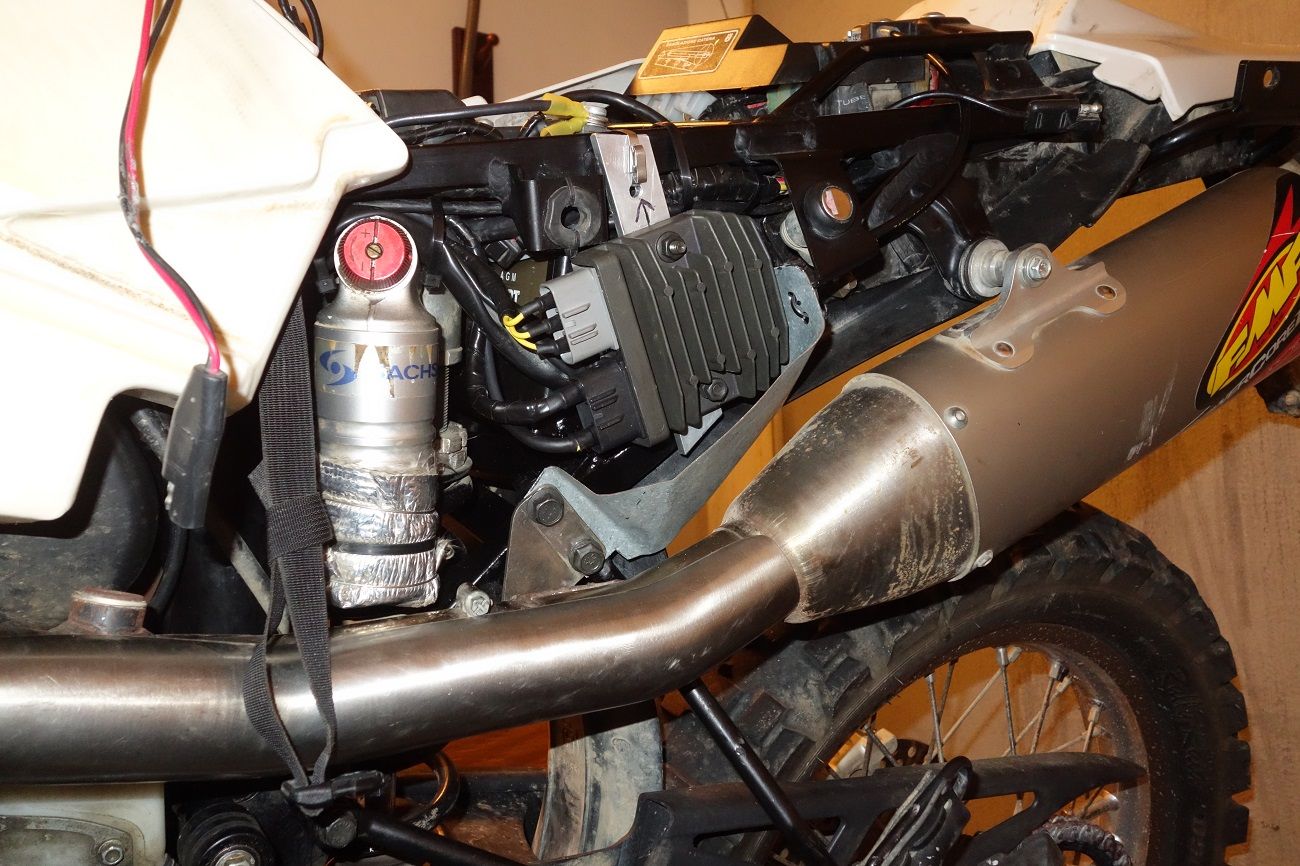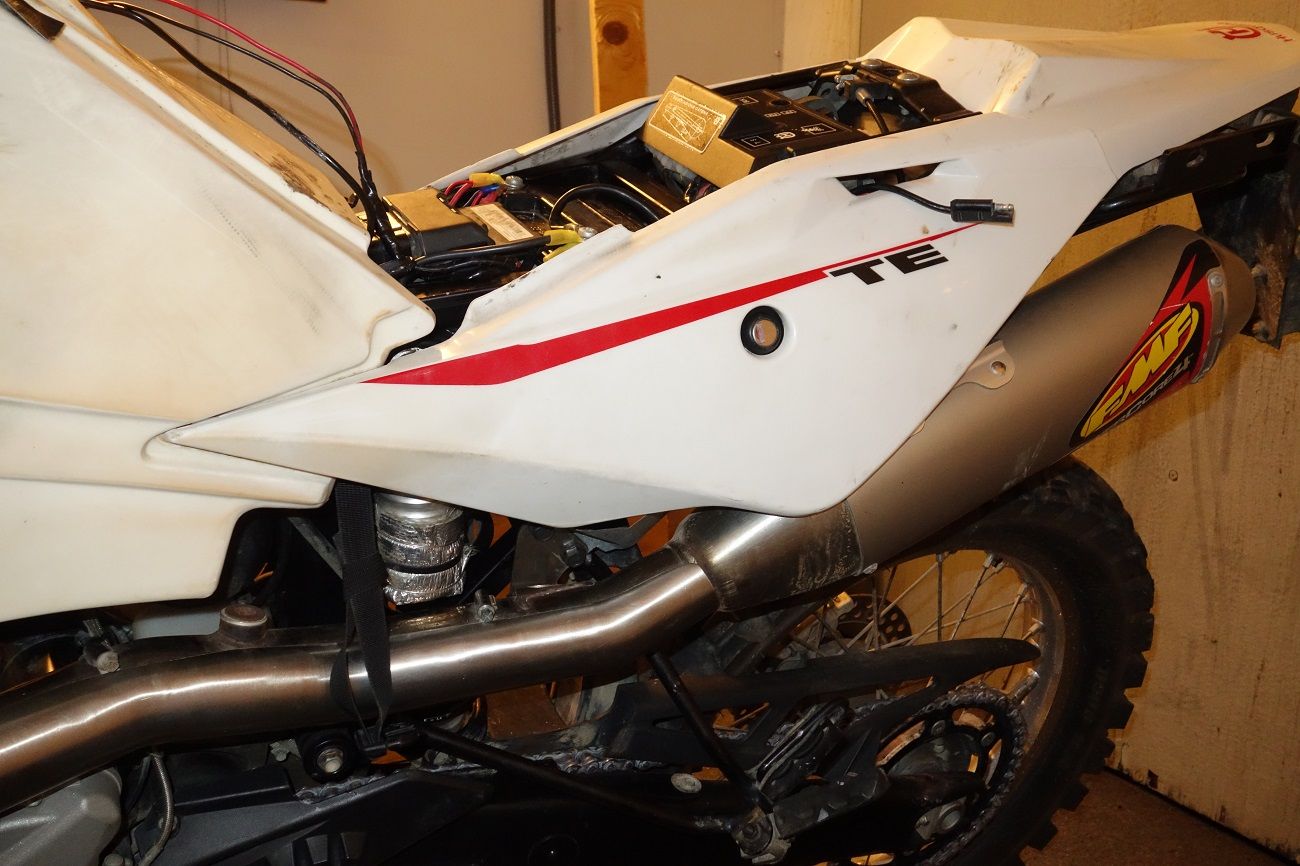DYNOBOB
Husqvarna
Pro Class
Will cross post this from ADV for posterity...
I'm at 12,500 miles/534 hours now, decided it's time for a good check-up during the off season. Going over the wiring, subframe, valve check, clutch basket, fork oil, coolant, oil, spark plug. May clean the injector and put in a new clutch pack.
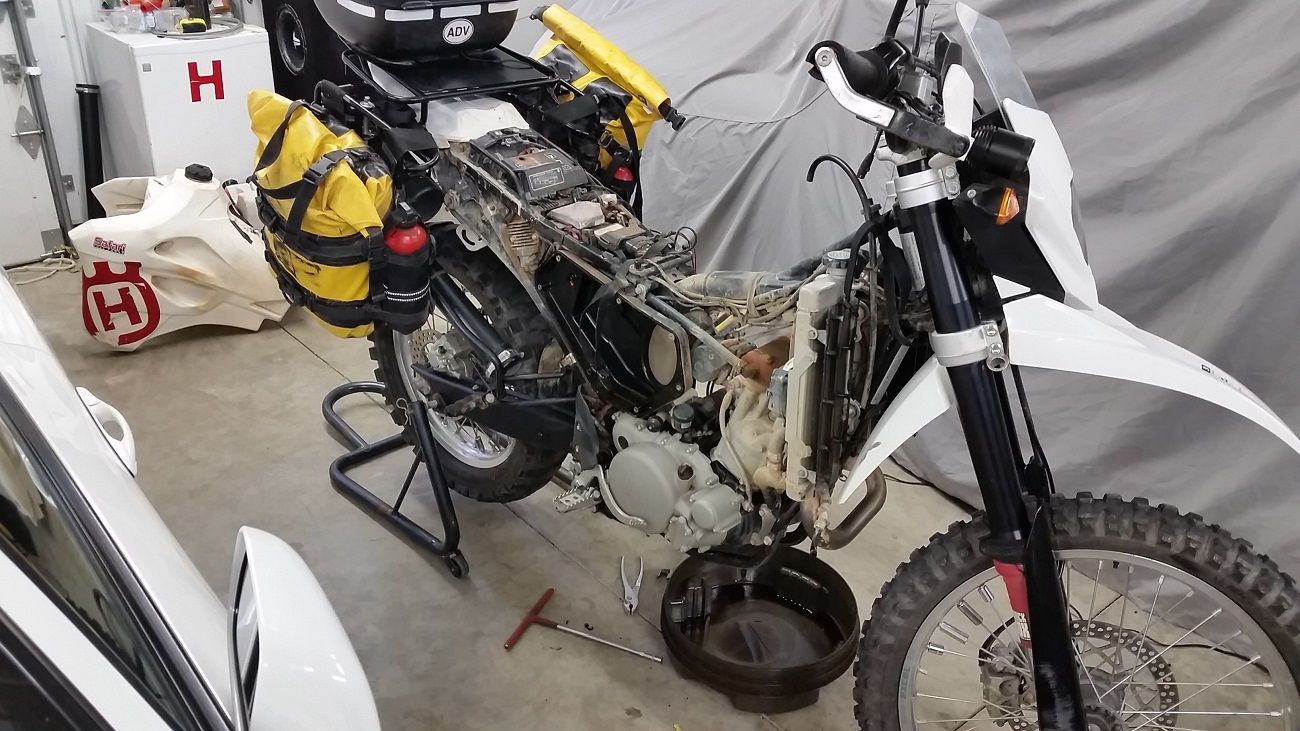
It's been on my mind for a couple years to swap the stock SCR shunt type voltage regulator for a MOS-FET unit from a late model Yamaha so picked up a used one from a wrecked '14 FJR1300 on Ebay for $50. Shindengen FH020AA (Yamaha 1D7-81960-01-00) is the part. It's a little larger than stock but I think it will fit on the subframe near the stock location. Also requires a bit of re-wiring, I'll post more pics when I get that far.
[Maybe worth explaining... The stock "SCR shunt" r/r is drawing full power from the stator at all time and shunting the unneeded power to ground. The FJR1300 was one of the first bikes to switch to a MOS-FET shunt style where the stator is still running at 100% but the voltage is much better controlled. The bike will now consistently charge at 14+ volts (less is being shunted) and the voltage won't drop as the bike revs up. I debated going with the even newer "series" style r/r from the '16 DL1000 (Shindengen SH847AA), it only draws the current that the bike is actually using and is much easier on stators. It's a big sucker though (4.5x4.5x1.75) and would be tough to mount IMO.]
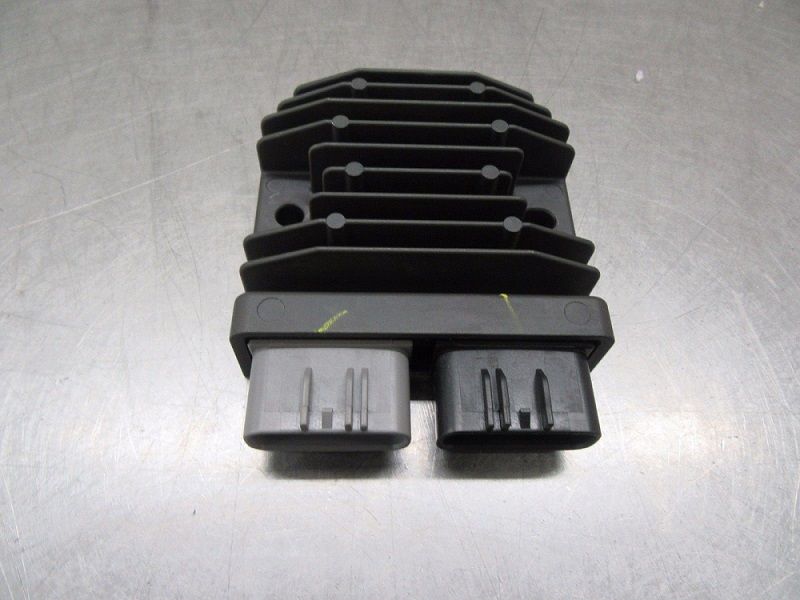
Make sure it's a FH020AA and not a FH012AA
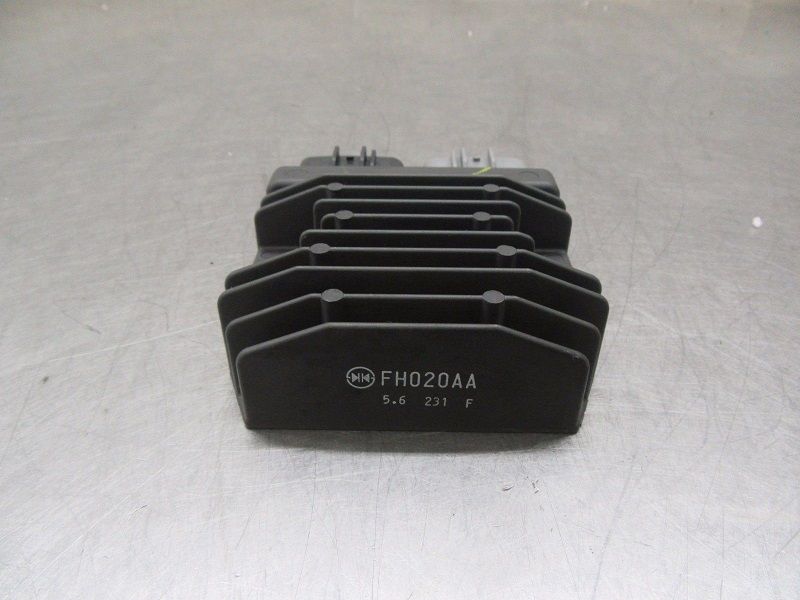
Found something I suspected I might in the wiring harness. The stator wires at the plug above the engine showed brown heat discoloration on the regulator side of the plug.
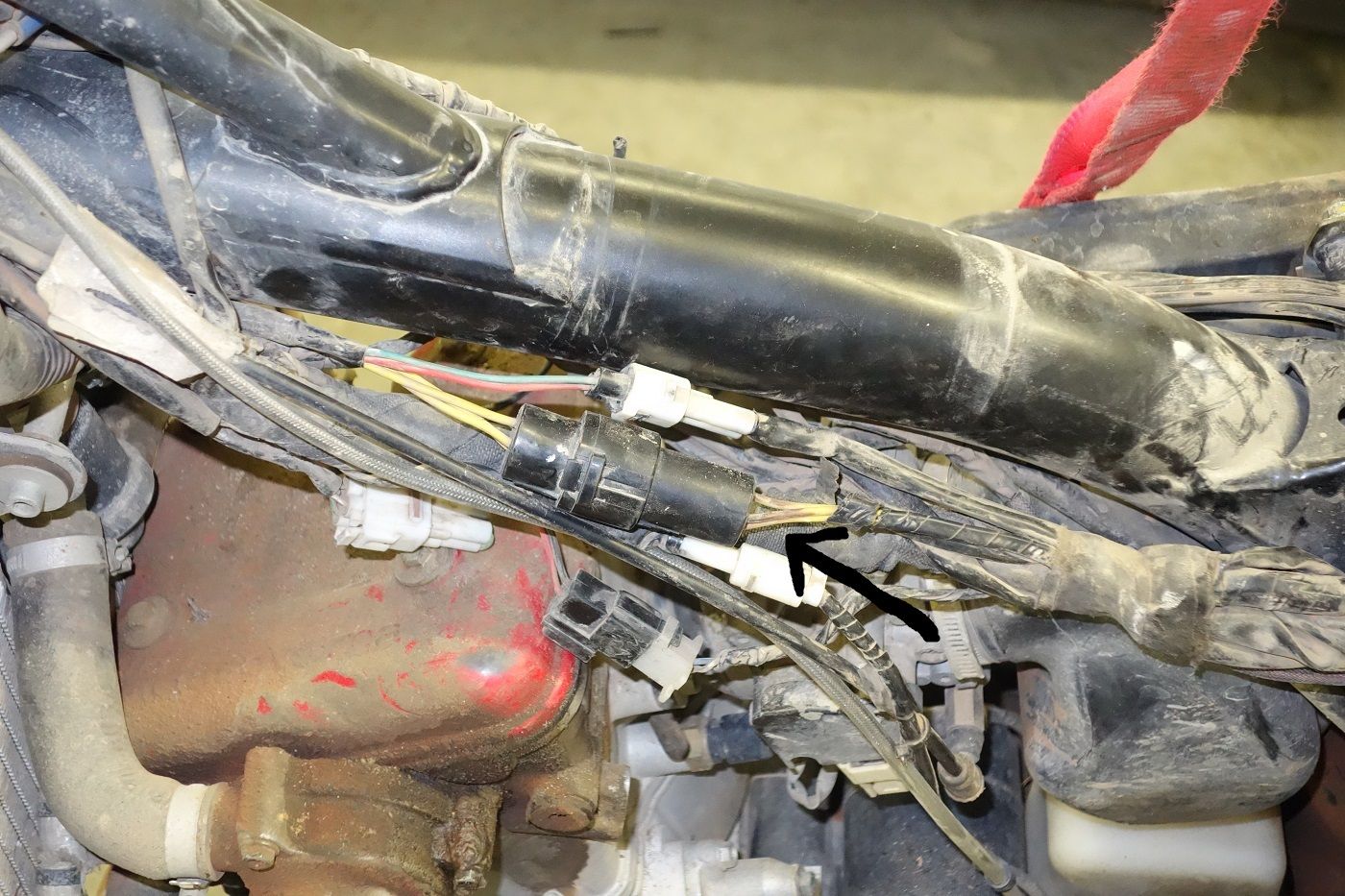
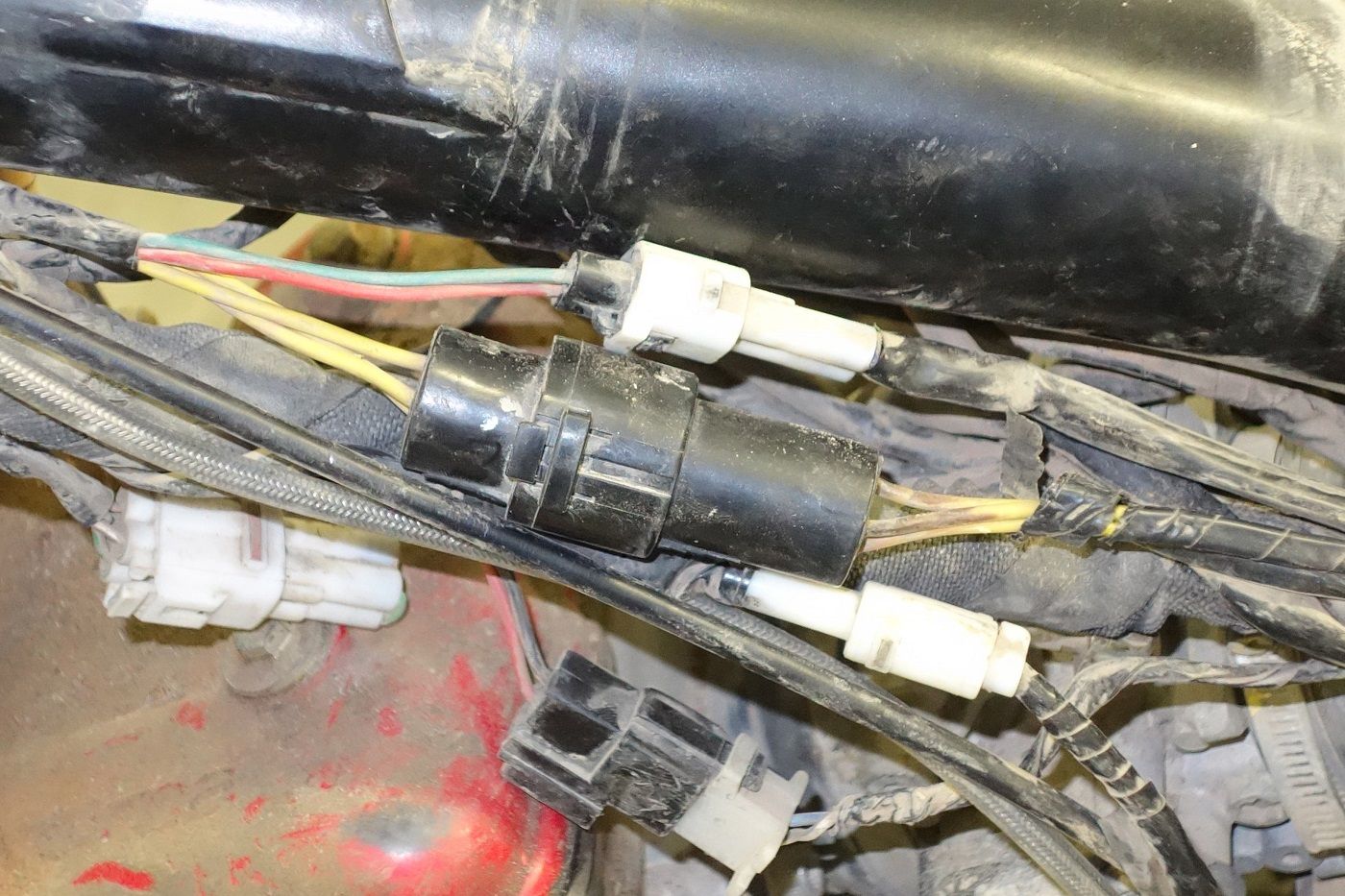
After some effort I got it unplugged and found melting inside. Even though the connectors don't look corroded, it's a resistance point and heat builds up. This is pretty common on motorcycles and will be alleviated somewhat with the new MOS-FET regulator and removing this plug.
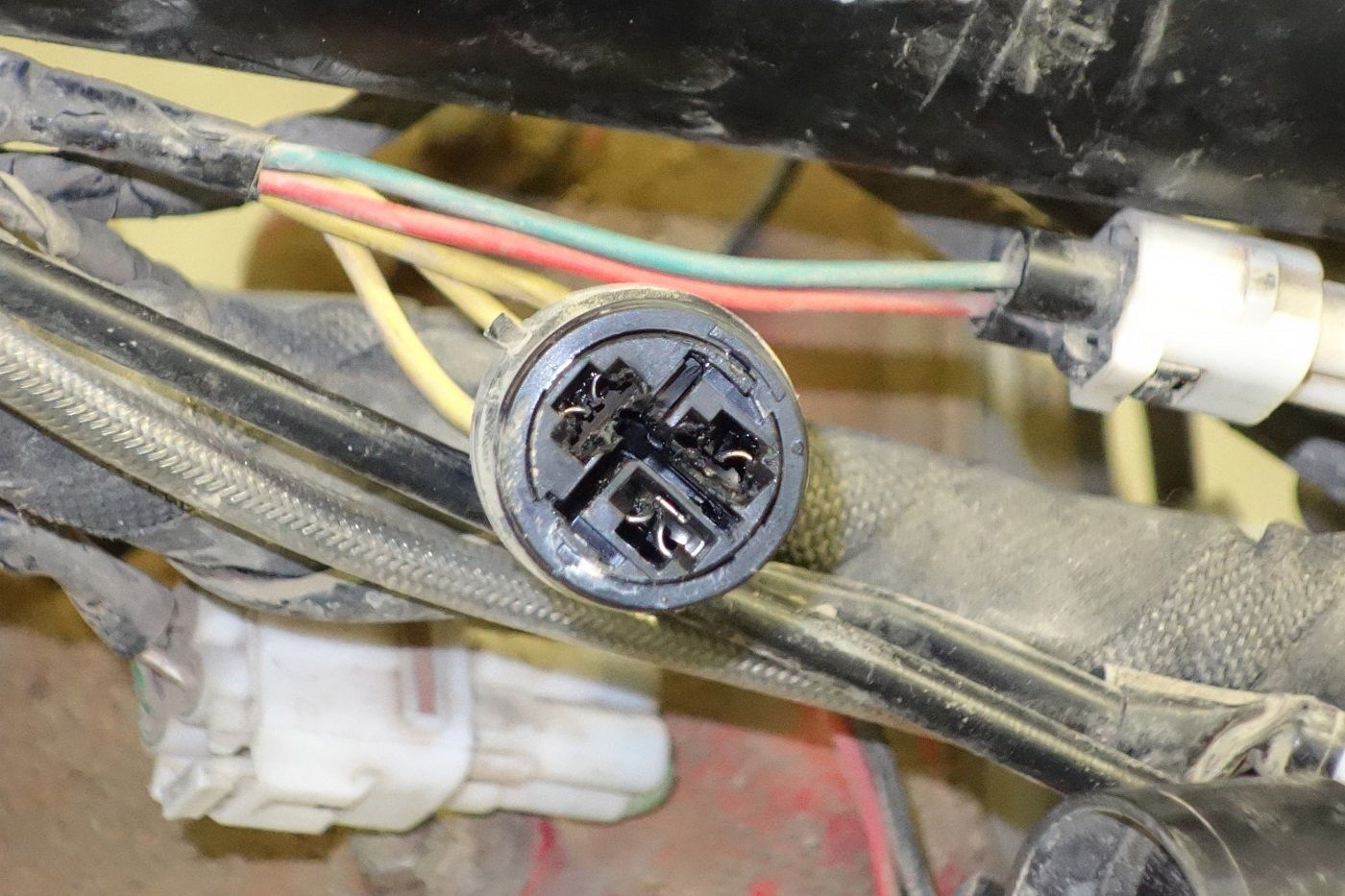
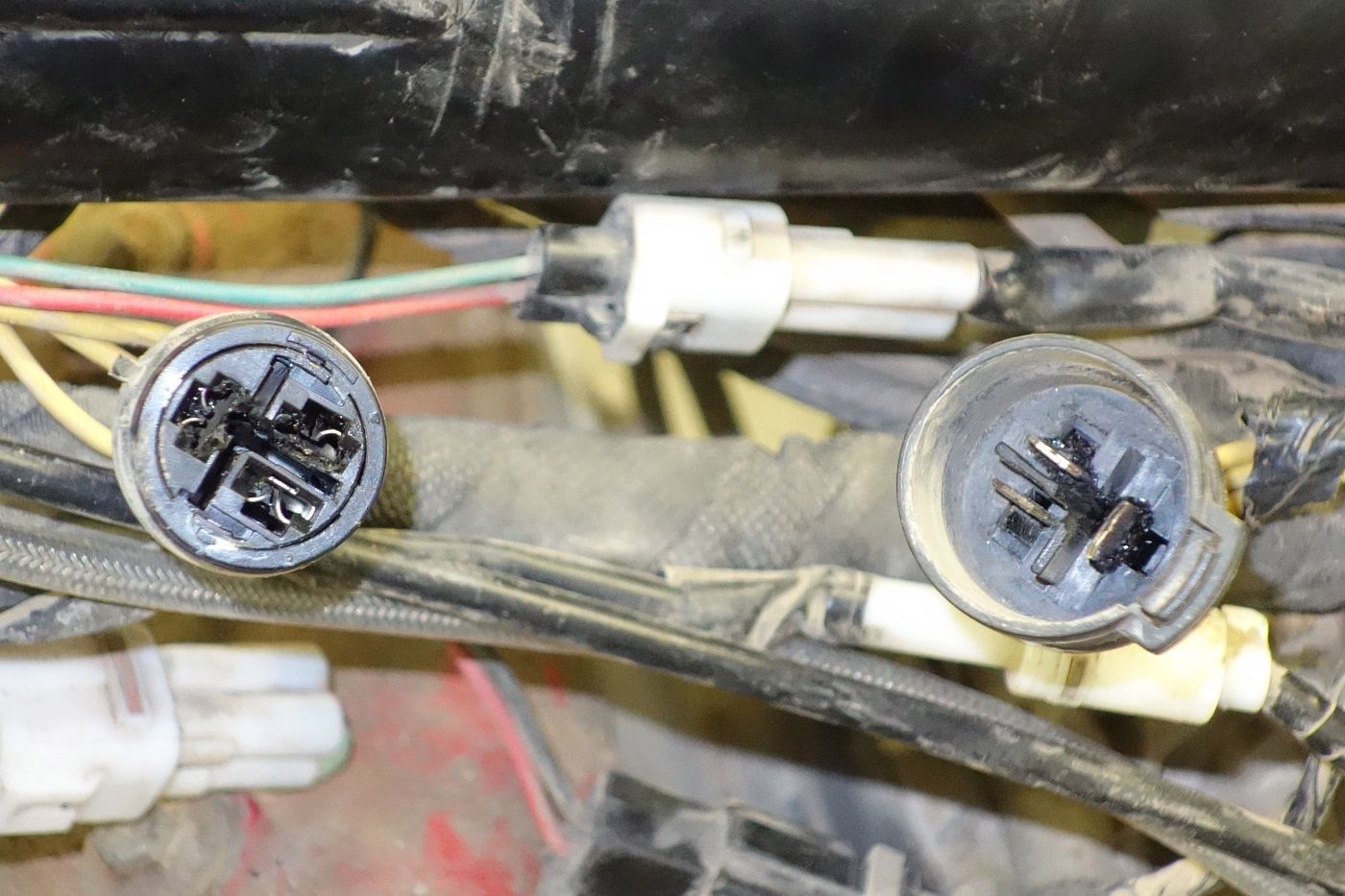
It's always bothered me that the stator/CPS wires ran up the front, right next to the headers. They are going to get re-routed to the new regulator wherever it ends up.


The mosfet unit is too big to fit in the stock location so I'm going to mount it on the opposite side of the subframe. The side cover fits back on perfectly without touching the regulator. When totally done, I'll secure it with stainless zip-ties (or may have my welder attach a plate there while he fixes my battery box). This regulator will be very under stressed in our application so I have no concerns about heat dissipation.
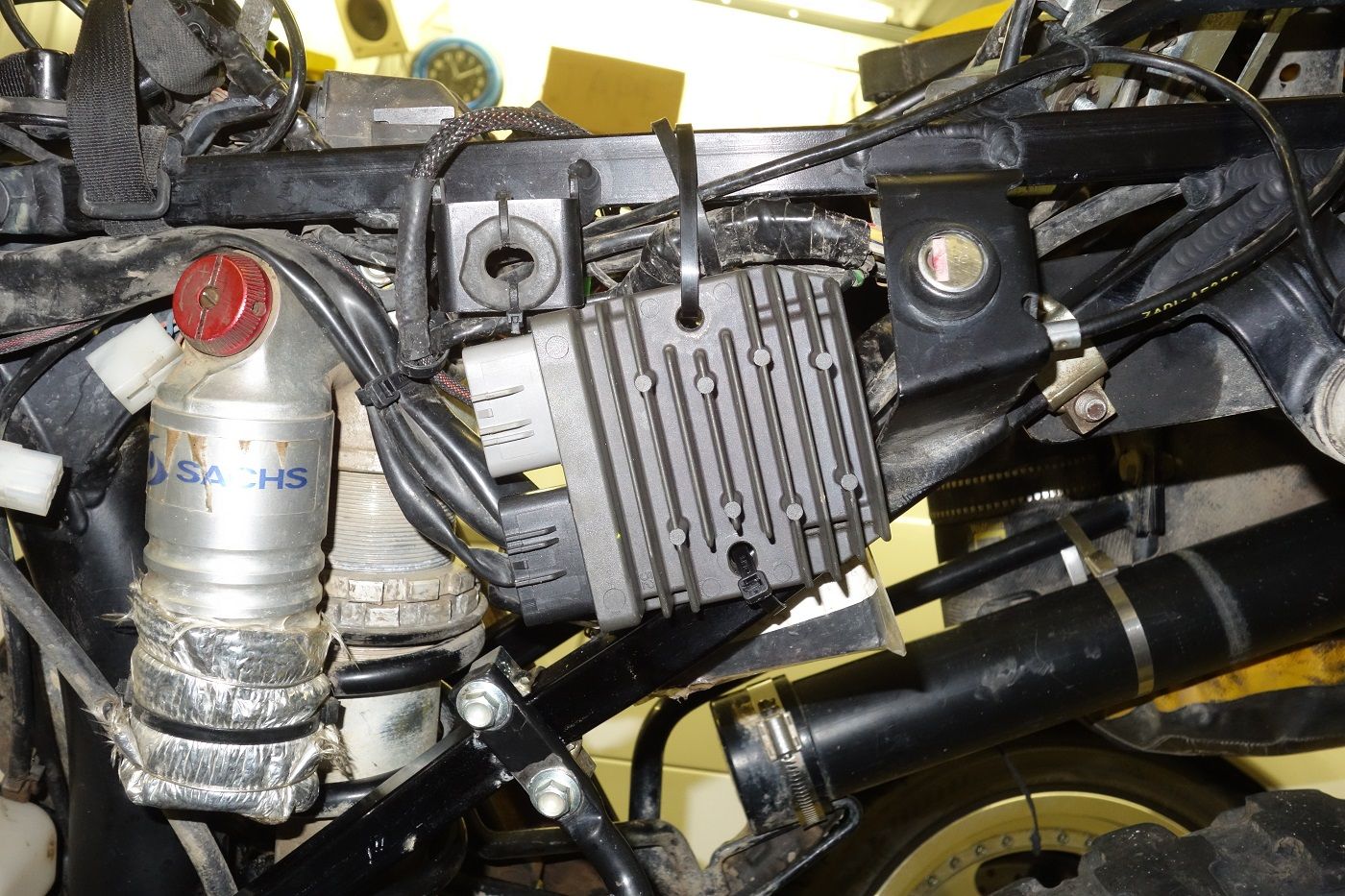
A big advantage of this location is the stator wires (once the melted plug is cut off) will reach the regulator without lengthening the wires. You'll need to slit the protective cover and fold the CPS wires back to their plug and re-tape the covering.
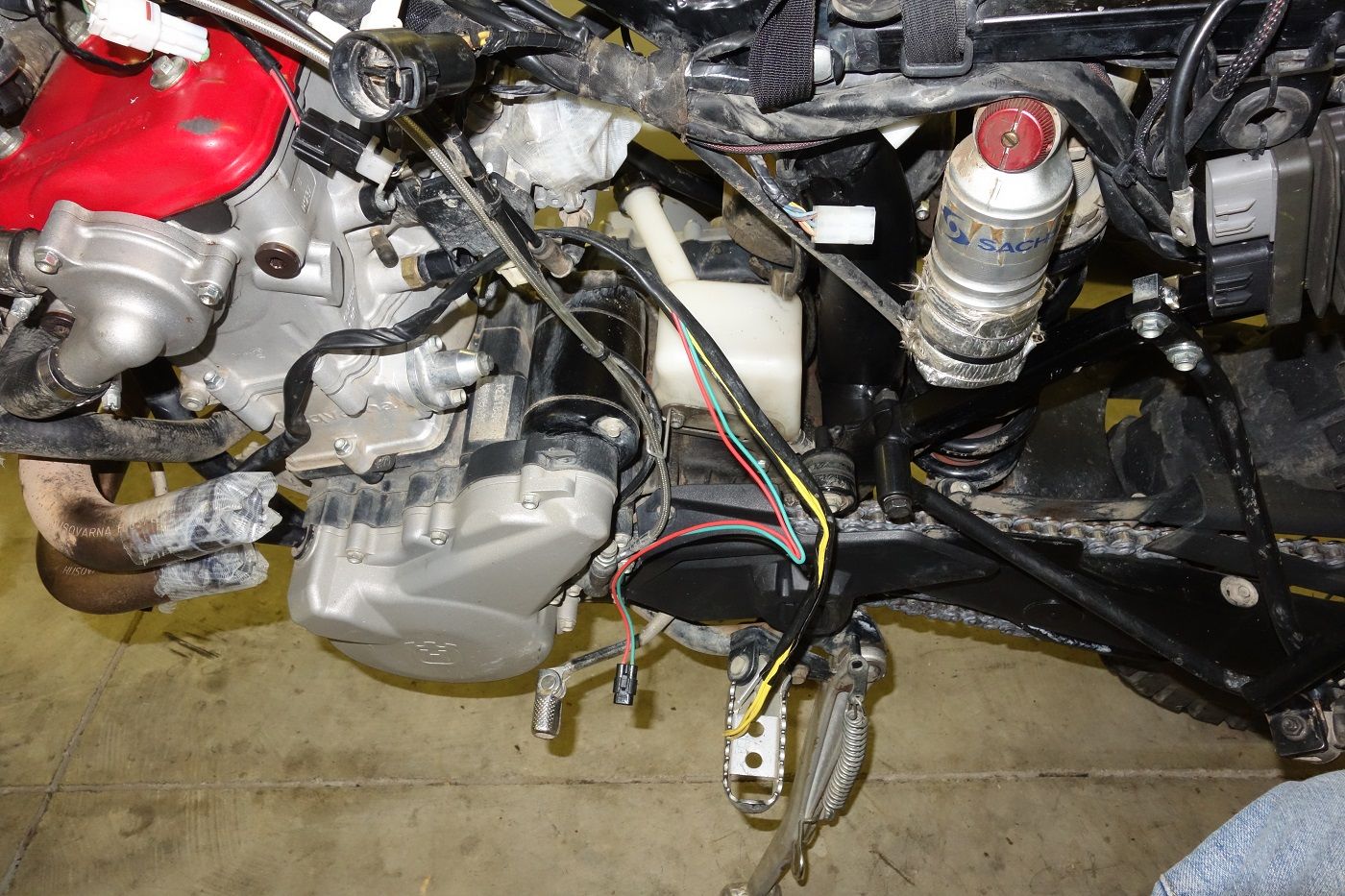


Secured the wires away from the exhaust (may add some heat-proof sheathing).

CPS wires in upper right.
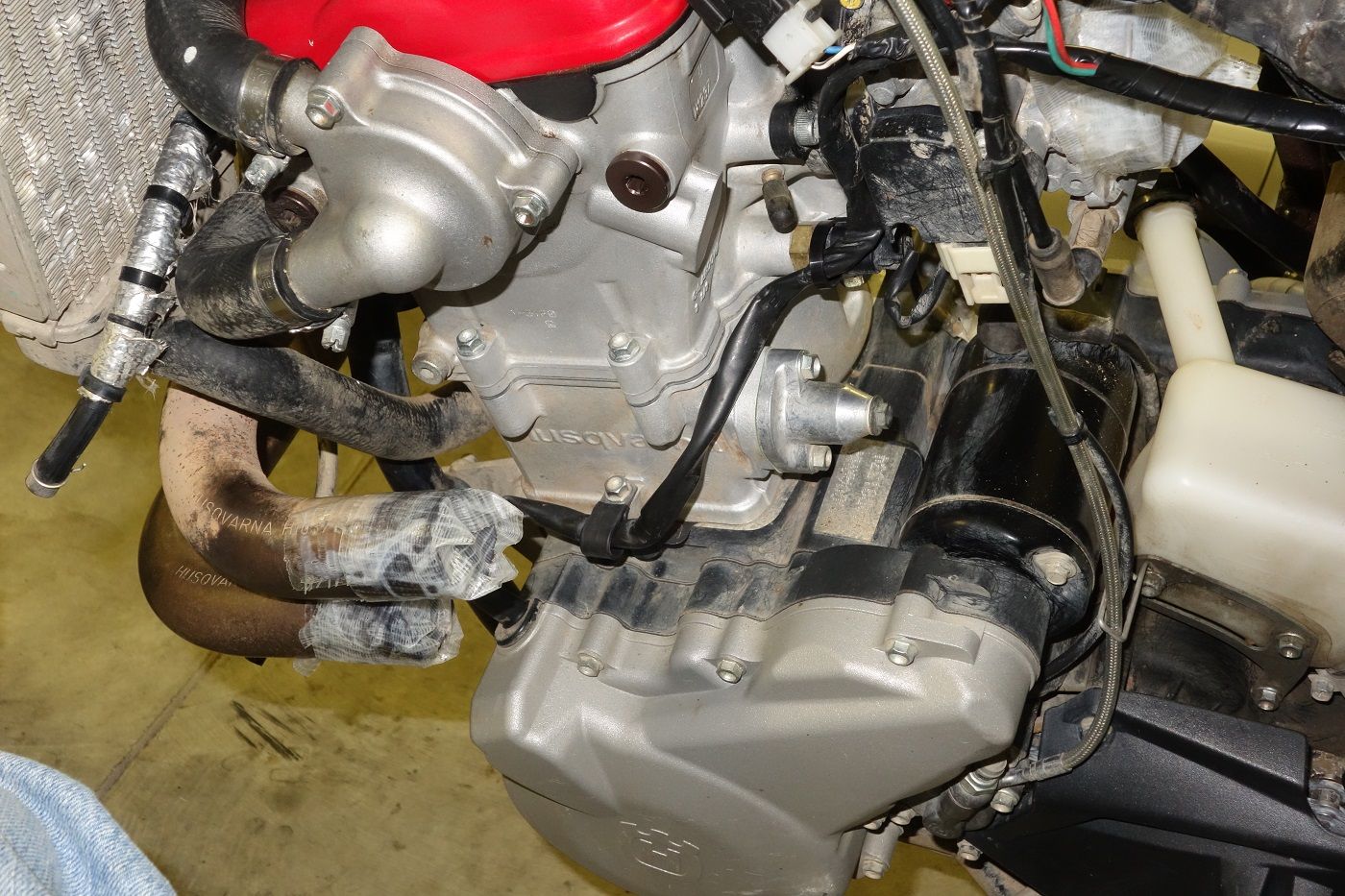
Next I pulled the regulator end of the harness to the left side of the bike and cut off the plug.
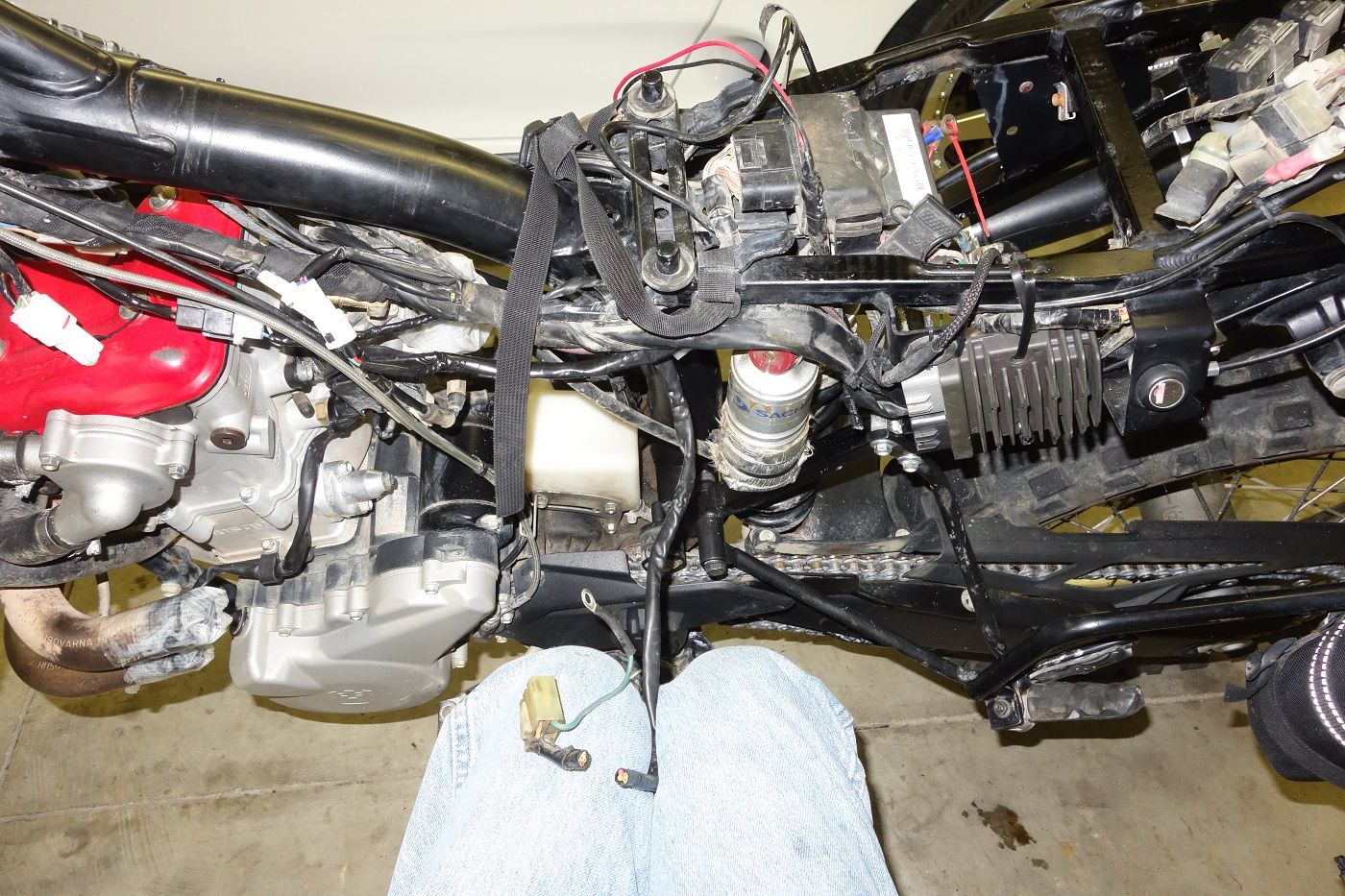
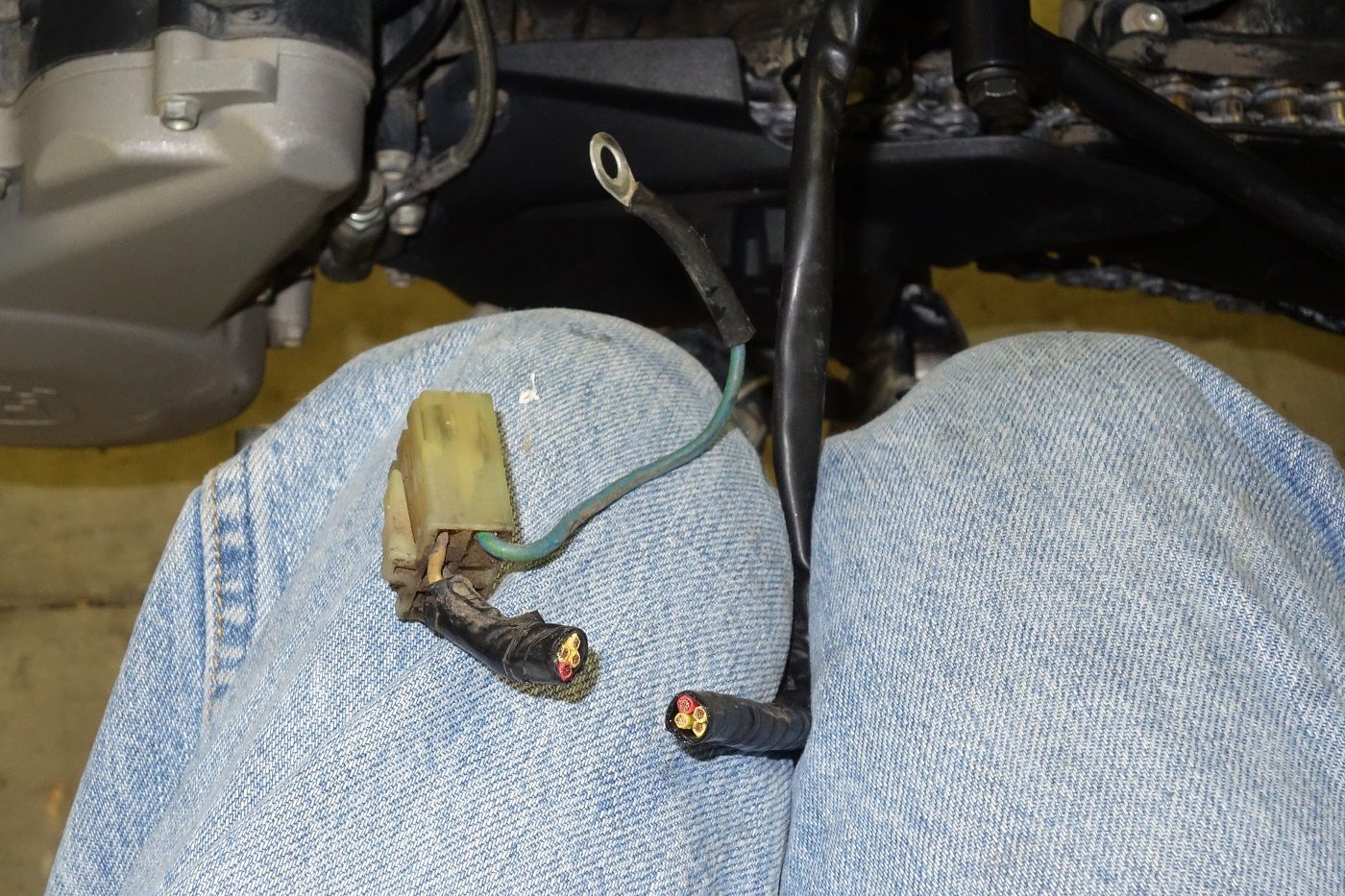
The regulator plug was nearly toast. The insulation was brittle and cracked. I was on borrowed time with this charging system.
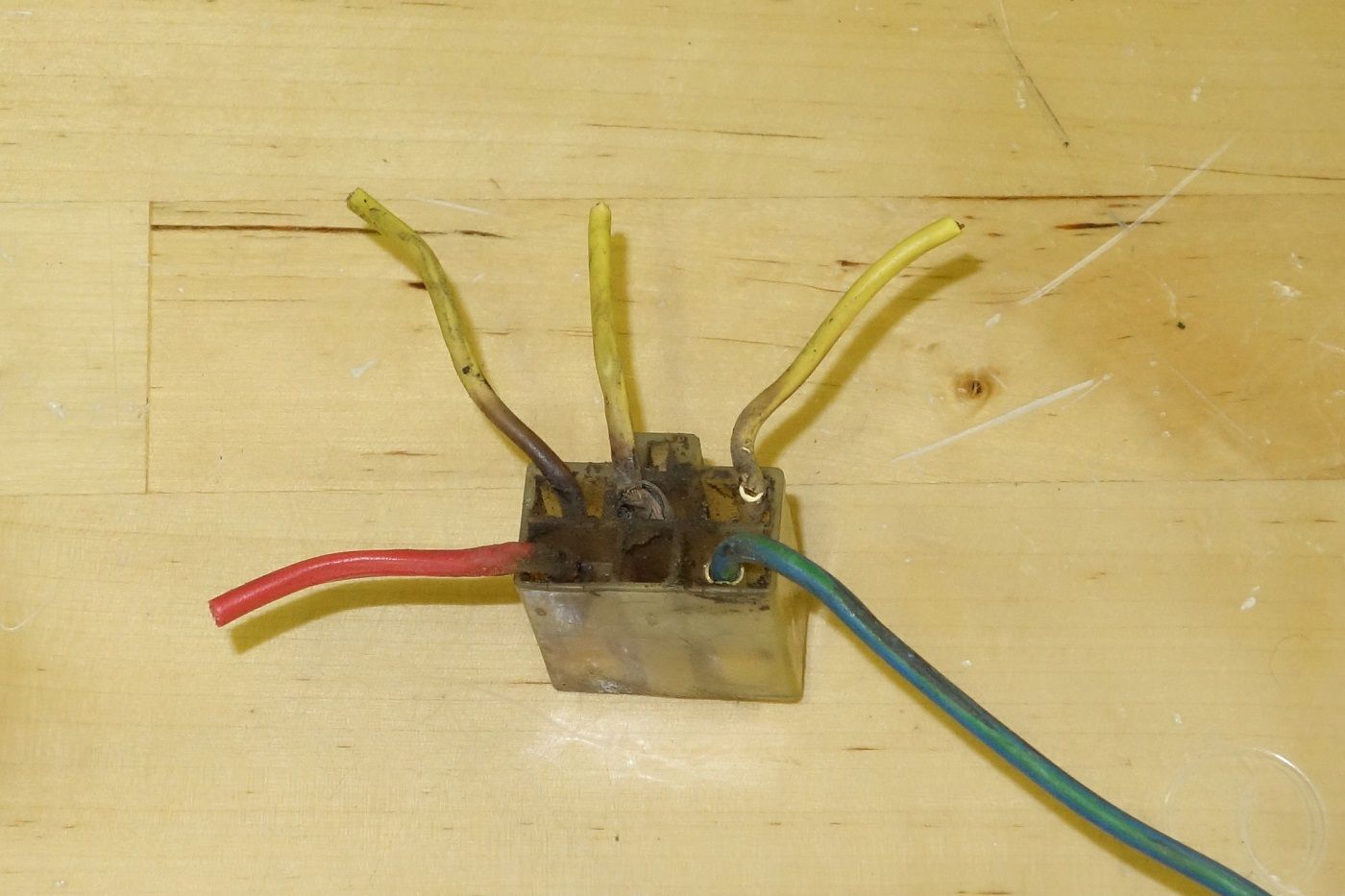
I'm at 12,500 miles/534 hours now, decided it's time for a good check-up during the off season. Going over the wiring, subframe, valve check, clutch basket, fork oil, coolant, oil, spark plug. May clean the injector and put in a new clutch pack.

It's been on my mind for a couple years to swap the stock SCR shunt type voltage regulator for a MOS-FET unit from a late model Yamaha so picked up a used one from a wrecked '14 FJR1300 on Ebay for $50. Shindengen FH020AA (Yamaha 1D7-81960-01-00) is the part. It's a little larger than stock but I think it will fit on the subframe near the stock location. Also requires a bit of re-wiring, I'll post more pics when I get that far.
[Maybe worth explaining... The stock "SCR shunt" r/r is drawing full power from the stator at all time and shunting the unneeded power to ground. The FJR1300 was one of the first bikes to switch to a MOS-FET shunt style where the stator is still running at 100% but the voltage is much better controlled. The bike will now consistently charge at 14+ volts (less is being shunted) and the voltage won't drop as the bike revs up. I debated going with the even newer "series" style r/r from the '16 DL1000 (Shindengen SH847AA), it only draws the current that the bike is actually using and is much easier on stators. It's a big sucker though (4.5x4.5x1.75) and would be tough to mount IMO.]

Make sure it's a FH020AA and not a FH012AA

Found something I suspected I might in the wiring harness. The stator wires at the plug above the engine showed brown heat discoloration on the regulator side of the plug.


After some effort I got it unplugged and found melting inside. Even though the connectors don't look corroded, it's a resistance point and heat builds up. This is pretty common on motorcycles and will be alleviated somewhat with the new MOS-FET regulator and removing this plug.


It's always bothered me that the stator/CPS wires ran up the front, right next to the headers. They are going to get re-routed to the new regulator wherever it ends up.


The mosfet unit is too big to fit in the stock location so I'm going to mount it on the opposite side of the subframe. The side cover fits back on perfectly without touching the regulator. When totally done, I'll secure it with stainless zip-ties (or may have my welder attach a plate there while he fixes my battery box). This regulator will be very under stressed in our application so I have no concerns about heat dissipation.

A big advantage of this location is the stator wires (once the melted plug is cut off) will reach the regulator without lengthening the wires. You'll need to slit the protective cover and fold the CPS wires back to their plug and re-tape the covering.



Secured the wires away from the exhaust (may add some heat-proof sheathing).

CPS wires in upper right.

Next I pulled the regulator end of the harness to the left side of the bike and cut off the plug.


The regulator plug was nearly toast. The insulation was brittle and cracked. I was on borrowed time with this charging system.


